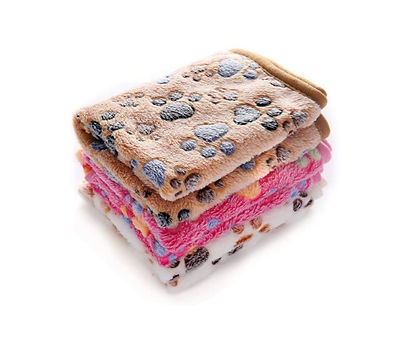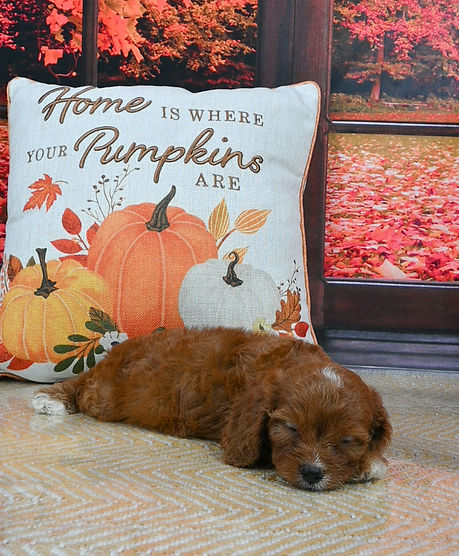Divinity Grace Cavapoos
"Every good and perfect gift is from above..."

Let's Get Ready For Pup!
Crate, grooming, toys, bowls, leash, collar, food, must have items & appointments? The guide for all things puppy!
Puppy Guide & Supply List
When deciding to add a puppy to your family we know there are a lot of questions about everything from potty training, to what to expect the first night home with your new puppy. We hope this page will help answer your questions as you prepare to add a new puppy to your family!

What will my new puppy come home with?
Your new puppy will be able to come home to you between 8-10 weeks old. At this time your puppy will be weaned from mom and eating dry puppy food. Your puppy will have had his/her first vet wellness exam, parvo puppy shot, and a series of deworming completed. We will also give you a puppy binder. In this binder will include: Vet check papers (signed by our vet), your puppy's shot and deworming record, our puppy contract and health guarantee, and our puppy health and care recommendations packet. Your puppy will go home with a puppy bag which includes: The puppy info binder, the puppy food we feed, a blanket with mom's scent, a favorite puppy toy, puppy pads, and some extras such as our favorite puppy shampoo and wipes (we have found that wipes come in handy in the car).
We try to give our puppy families as much information and tips as possible to make bringing home your new puppy as easy an adjustment as possible.

Essentials for the first week home with your new puppy!
Your new puppy will need certain items from the very start. We put together a list to help you get an idea of what you will be needing for your new puppy. Our list is always growing so feel free to let us know what your favorite pup items are!
Shopping Links:

During the day we use a puppy play pen (kennel fence) when we can't supervise. Putting your puppy in a puppy play pen with lots of fun toys, food, water and either a litter box (or puppy pad), will keep your puppy occupied and safe. This way you won't have to worry about puppy getting into trouble or finding any not so fun surprises. There are a lot of choices on various sites but this one is more reasonably priced and will work for your growing puppy.
24 inch Petmate crate- We recommend getting your puppy used to being crated overnight. This will also help with potty training and make traveling much easier.


Calming dog donut bed. The cover is easily removed and machine washable.

If you will be flying with your pup, this is a good airplane approved dog carrier.
Identification tag with name and number.
Stainless Steel dog dishes, never plastic. The next best choice would be ceramic. This one has a bonus tray to stay mess free!

Dog blankets are another option to keep your pup comfy. These are perfect for a puppy, and are machine washable.

Collar and leash! You can choose whatever kind you like. These are very durable in our experience.

We prefer soft harnesses (like Lucy & Co.) for walks. For an eight-week-old puppy, an extra small collar and harness size will fit just fine. Puppies grow quickly though, and sizes will need to be adjusted.


Puppy shampoo. Doodle puppies need to be washed 1-2 times a month or "as needed".


Brush- Doodle coats need to be brushed at least every other day to prevent tangles. Practicing good coat care with your puppy is so important to start from day one! This means practice a love for brushing, bath time and even nail trimming. Make each session a positive one and it will be a fun bonding time for you and your Cavapoo.
Kong Rubber Treat toys. We love to stuff the ends with a treat or peanut butter!

Treats are great to have on hand, The are perfect for training and rewarding good behavior.

We use both puppy pads and pine pellet litter boxes to start potty training the puppies. So, the puppies have been introduced to both, by the time you bring your puppy home. Puppy pads are easier for travelling but the litter box makes for an easier transition over to potty training outside when the puppy is fully parvo immune. It is totally your decision on what you prefer to continue when you get your puppy. Links for both are below.

Pick a quality dog food with healthy grains. We will give you a freezer bag full of the food we have been using to mix with whatever you pick.

Bully sticks are perfect to keep a chewing puppy busy. No Rawhides!


We fill a cat litter pan halfway full of pine pellets and place the box as close to the back door (or wherever the designated potty area will be) as possible.
We usually buy our pine pellets from Tractor Supply Co. but they can also be found at most local feed stores.


Snuggle puppies are great to help ease the separation anxiety from mom and littermates, during the puppy adjustment period.
"The Snuggle Puppy recreates that intimacy with physical warmth and a 'real-feel' pulsing heartbeat, providing an extra source of comfort for your pet."-Amazon
Earth rated doggy bags. We have tried multiple brands and these are the best we have found. We order them from Amazon and they go everywhere with us.

Dog puzzles are a fun and stimulating toy to get your puppies tired, in a good way. There are lots of puzzle toys out there but this is an example.


A fun dog chew toy that our puppies love. Ordered off Amazon.

Snuffle mats are another fun and stimulating doggy puzzle toy. There are lots of options out there but this is another example.

Doggy car seats are great to keep your pups safe and comfortable when traveling in the car. The best way to get dogs accustomed to riding in a car seat is to get them used to it when they are young. Having someone sit in the back seat with them at first is very helpful, especially on the first ride home.

Doggy carriers are perfect for traveling with those young pups that are not fully parvo immune. Doggy carriers allow a safe way to socialize and bring your pups with you to public places while keeping your pup safe and off the ground.

Dog cots are perfect for inside or outside. They help keep your pet cool and comfy.
Resources we use:
-
Dr. Karen Becker (Forever Dog Book)
-
Dr. Judy Morgan (Holistic Veterinarian
-
Revival Pet Health
-
Wolf Creek
-
Battersea Dog Training Videos (YouTube)


The first few days with your new puppy:
Welcoming a new puppy into your home is so exciting, but the early days can also be stressful for both you and them. The first few days and weeks are important in ensuring your puppy integrates well into your family and grows into a healthy, well-behaved dog. Establishing routines will help them feel secure and understand what’s expected of them. Here are some things to keep in mind to help your puppy settle in.
-
Keep your house calm. Your puppy may be feeling stressed by the new sights, sounds and smells, and the separation from their mother. So, keep your house very calm to avoid adding to this stress.
-
Take them to their designated potty area and continually use that one specific area until they are fully parvo immune and can go outside to potty.
-
Take your puppy into a safe part of the house that you have blocked off and let them start sniffing and exploring in their own time. To a puppy, your home is an adventure playground. Protect the new puppy and save your belongings by puppy-proofing your home. Stow away all chewable objects that can be swallowed. Make sure electrical cabling is safe behind furniture or cover the cables. Blocking access to rooms where puppy may go pee or poop or chew belongings. Having an indoor gated off place to put your puppy when you can’t supervise, can come in handy.
-
Always supervise as your puppy is getting used to your home. Let your puppy come to you for comfort and not the other way around, as a puppy can be easily overwhelmed by human contact.
Puppies like to know what to expect. Plan what your routine will be for feeding, toilet trips, exercise, and grooming, then you can get started on day one.
*Remember to establish your puppy with a vet: Ask around to find a local vet you feel comfortable with. Seek a vet with a good reputation that loves animals. A good clinic will talk you through a puppy shot schedule, deworming, parasite control, and will give helpful advice.

Your puppy's first night with you:
As with human babies, some puppies settle easily from the first night and others will give you sleepless nights as they adjust. Be patient and consistent and follow these tips.
-
Show your new puppy their bed. Put the blanket with their litter’s scent and something with your scent (like an old sock) in their sleeping place.
-
Use a puppy crate. This will make your life so much easier in the long run. A dog’s crate is like a den, a safe place where they can go to sleep and relax.
-
At first, put your puppy’s crate somewhere near where you sleep. That way they can see and smell you and feel more at ease.
-
Try to limit the times you take your puppy out of the crate at night as you do not want this to be a routine. Only take your puppy out if you think he/she needs to potty. Never play or make a big deal about it and put your puppy right back to bed. By three-four months of age most puppies are physically able of making it all night (seven or eight hours) without a bathroom trip.
-
Crate Training a Puppy: A crate, like a den, is a safe place for your new puppy. Choose a crate just big enough for the puppy to lie down with their legs outstretched and turn around in. If you choose one bigger than this, they may be more likely to potty in a corner. Place a blanket, towel, or small easily washable bed inside. We will also provide you a blanket or towel that smells like mother that will be a comforting scent to the puppy. Make their crate a happy place by hiding treats inside. When your puppy sniffs out the goodies, praise them. Feed your puppy inside the crate, so they link it to good things. Once the puppy is happy to go inside, close the door. Praise the puppy for being calm and open the door again. Slowly extend how long the door is shut and be sure to give lots of praise for good behavior. If your puppy cries, don’t let them out of the puppy crate, as this rewards their noise. Instead, only open the door when puppy is quiet, showing them that calmness is good. Remember patience and repetition is key!